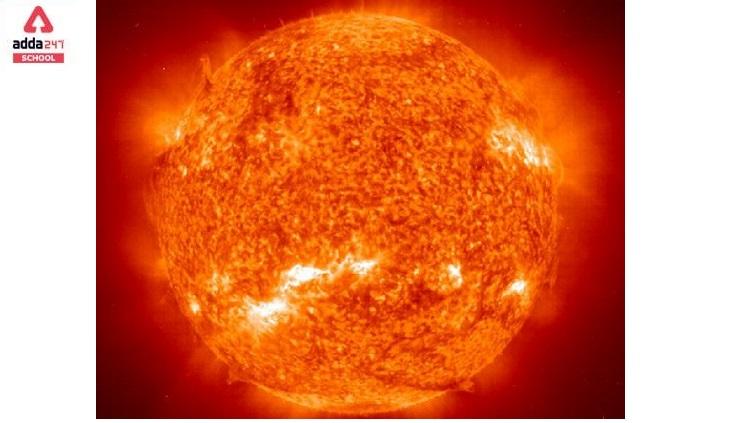Table of Contents
The Sun is a Star
The Sun is classified as a star due to several characteristics that it shares with other stars in the universe. These characteristics include its composition, structure, and the processes it undergoes. Here’s a detailed explanation of the sun is a Star:
Nuclear Fusion: The primary reason the Sun is considered a star is due to the process of nuclear fusion occurring in its core. This process involves hydrogen atoms fusing together to form helium, releasing a tremendous amount of energy. This energy is emitted as light and heat, which is a defining characteristic of stars.
Composition: The Sun, like other stars, is primarily composed of hydrogen and helium, which are the two simplest and most abundant elements in the universe. This composition is typical for stars.
Luminosity: Stars are luminous bodies, and the Sun is no exception. It emits light and other forms of electromagnetic radiation due to the energy produced by nuclear fusion in its core. The Sun’s luminosity is the source of all light and energy that supports life on Earth.
Mass and Gravity: The Sun has a significant mass, which results in a strong gravitational pull. This gravitational force is what keeps the Earth and other planets in our solar system in orbit around the Sun. The mass of a star plays a crucial role in its lifecycle and evolution.
Stellar Lifecycle: The Sun, like other stars, has a lifecycle that includes stages of birth, middle age (where it currently is), and eventually, it will reach an end stage. For the Sun, this will involve expanding into a red giant and then shedding its outer layers to leave behind a white dwarf.
Stable Hydrostatic Equilibrium: The Sun is in a state of hydrostatic equilibrium, where the inward pull of gravity is perfectly balanced by the outward pressure of the hot gases and radiation inside it. This balance is a characteristic of stars during their stable phase.
Size and Scale: While the Sun is an average-sized star compared to others in the universe, its size is immense compared to planets. The Sun’s diameter is about 109 times that of Earth, and it could fit more than a million Earths inside it.
Spectral Classification: The Sun is classified as a G-type main-sequence star (G2V), based on its spectral characteristics, temperature, and luminosity. This classification is part of a system used by astronomers to categorize stars.
In summary, the Sun’s processes, composition, luminosity, mass, lifecycle, and characteristics align with those of other stars, classifying it as a star. It is our closest star and provides a vital energy source for life on Earth.
Why is the Sun called a star?
Why is the sun called a star? We all have always wondered about the sun, the moon and everything about this universe. Most of the things in the universe that have never been discovered properly are so mysterious and thus it makes us realize our limits as merely a living creatures on a planet called Earth.
The sun is a star, but why and how? Let’s get to know that.
The Sun is the central star of our Solar System. This ‘ball of fire’ is a nearly perfect sphere of hot plasma. It is believed to be heated to incandescence in its core by nuclear fusion reactions and emitting energy mostly as visible light, ultraviolet light, and infrared radiation. It is, without a doubt, the most vital source of energy for life on Earth. It has a diameter of approximately 109 times that of the Earth. It has a mass of around 330,000 times that of Earth and makes up 99.86 percent of the Solar System’s total mass. Hydrogen makes up roughly three-quarters of the Sun’s mass, while helium makes up the rest, with considerably lesser amounts of heavier elements including oxygen, carbon, neon, and iron.
Read About the fact: Does Moon has its own Light.
Why is the Sun called a star
Every second, the Sun’s core fuses approximately 600 million tonnes of hydrogen into helium, transforming 4 million tonnes of substance into energy. The Sun’s light and heat come from this energy, which takes between 10,000 and 170,000 years to escape the core. When hydrogen fusion in the Sun’s core reaches a point where it is no longer in hydrostatic equilibrium, the Sun’s core will experience a significant rise in density and temperature, while its outer layers expand, converting the Sun into a red giant. The Sun will eventually grow huge enough to encompass the current orbits of Mercury and Venus, rendering Earth uninhabitable — but not for another five billion years. It will then shed its outer layers and become a white dwarf, a dense sort of cooling star that no longer produces energy through fusion but still glows and emits heat from its prior fusion.
Since prehistoric times, people have acknowledged the Sun’s huge impact on the Earth. Some tribes considered the Sun to be a divinity. Solar calendars are based on the Earth’s synodic rotation and orbit around the Sun, one of which being the Gregorian calendar, which is the most widely used calendar today.
The predominant fusion process since the Sun’s formation has been the conversion of hydrogen to helium. The amount of helium and its location within the Sun have gradually altered over the last 4.6 billion years. Due to fusion, the proportion of helium within the core has increased from around 24 per cent to about 60 per cent, and some helium and heavy elements have settled from the photosphere towards the Sun’s core due to gravity.
Read About: Global Warming



 All Country Name List: Know Total 195 Co...
All Country Name List: Know Total 195 Co...
 No 1 School in India- Top 10 School List...
No 1 School in India- Top 10 School List...
 Diwali 2024: Date and Time in India, Che...
Diwali 2024: Date and Time in India, Che...










